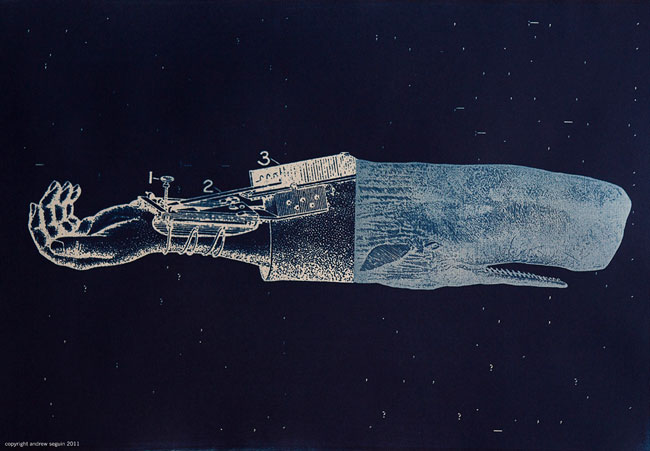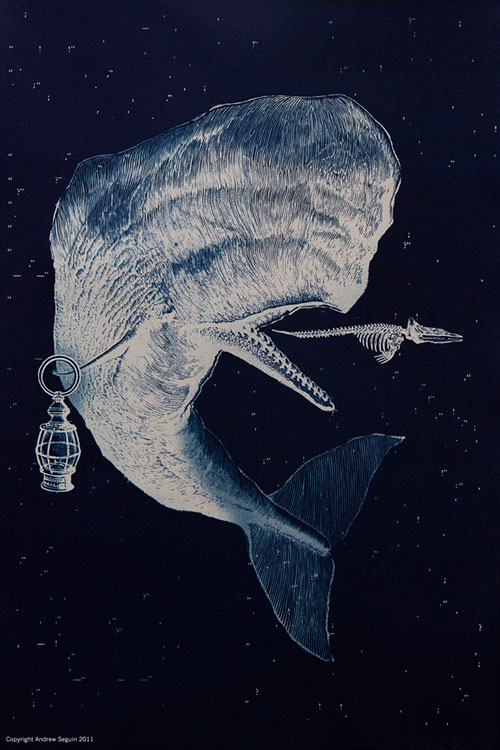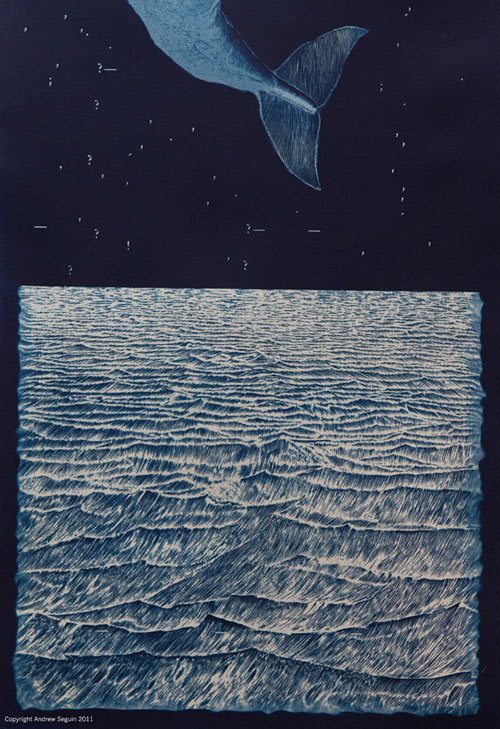Moby-Dick inspired cyanotypes by Andrew Seguin

1. Why did you decide to illustrate Moby-Dick, and what was the process like?
Moby-Dick is one of my favorite books and I reread it every few years. In 2009 I was reading it again and I had this vision of creating a version of the novel stripped of everything but its punctuation. Because Moby-Dick is so baroque and dense, I wanted to see what I could learn about it by pursuing its opposite: sparity. As a poet as well as an artist, I became fascinated by what Melville’s punctuation — or any writer’s, for that matter — might tell us about his style. Visually, I thought it would be like a musical score.
I started to make my version of Moby-Dick by scanning its pages, erasing all of the words in Photoshop, and then making the remaining images of punctuation into negatives on an inkjet printer. Those negatives I printed as cyanotypes, which are a form of photographic print — light-sensitive iron salts are hand-coated onto watercolor paper, a negative is placed on top, and then it’s exposed in sunlight and developed in water. They dry to a deep, intense blue.
The first prints were beautiful — like constellations of the English language’s margins — but after making a few of them, I felt they were lacking something. So I decided to add to them. I scanned images from old dictionaries and illustrated versions of Moby-Dick and fashioned those disparate parts, including the punctuation images I had already created, into collages on my computer. I then made those collages into negatives and finally printed them, last summer and fall, as cyanotypes. Those are what you see here. Most were printed on my fire escape and developed in my bathtub.

2. What is your background as an artist?
I’ve always loved making things. But a pivotal moment was my twelfth birthday, when my dad gave me a 35mm camera. I’ve been a photographer ever since. I started making cyanotypes about four years ago, as a way to expand my artistic practice — cyanotypes are photographs, but the process is cameraless, so it’s more akin to printmaking. I never went to art school, though. I took photography classes in college and in graduate school (I have an MFA in poetry), and I’ve gone to a number of workshops since then. I’ve always made a point of making new work and learning new processes on my own.
3. What are you inspired by right now?
The poems of João Cabral de Melo Neto and Gustaf Sobin, John Chamberlain’s car-part sculptures, and the blooming crabapple and cherry trees here in New York.




You must log in to post a comment.